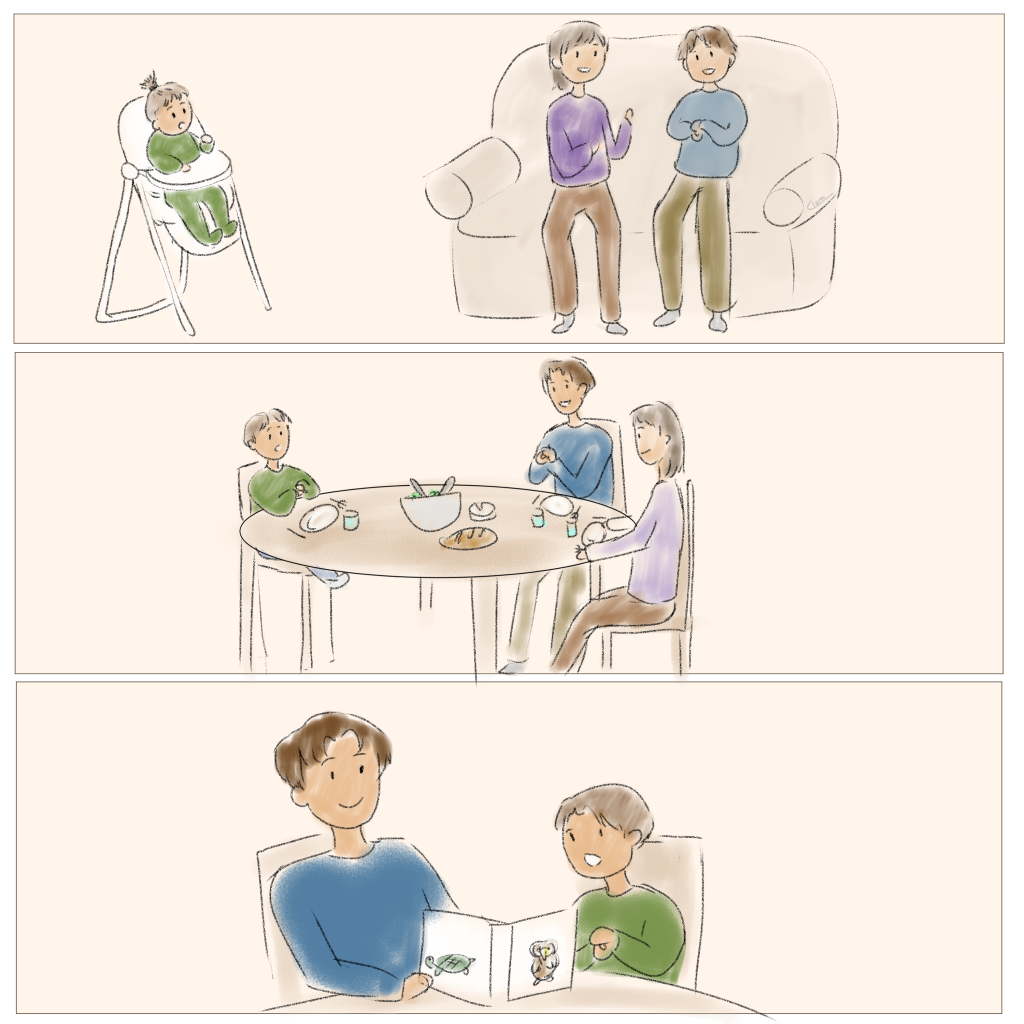How do I build a strong foundation for a Deaf child’s literacy skills?

When we think of literacy, the first thoughts that come to mind might be the shapes of letters or characters or the hand movements used to write those letters or characters (see Do we need to teach handwriting these days?). There is, however, more to literacy than the skills children develop when they start learning to read and write. The primary foundation of literacy is actually the signed or spoken language a child begins to see or hear from her first days.
Imagine if one week, here at Kotoboo, we published a comic about how “bamouling” is important for language development. You would naturally stumble on this word you do not know: you might wonder how exactly it is pronounced, what exactly it means, you might need to reread the sentence. The same holds true for children learning to read. It is easier for a child to learn to read, just as it would be for her to read, a word she knows.
This link may seem intuitive for hearing children who often speak and read the same language. Yet, it may seem less evident for Deaf children who often learn to sign in sign language and read in writing associated with a spoken language (e.g., a Deaf child in France may learn French Sign Language and the French written language, which are two different languages, like French and English). A hearing child’s vocabulary in a spoken language and a Deaf child’s vocabulary in a sign language both are the best predictors of children’s reading success in school.
It is therefore important to build a Deaf child’s sign vocabulary from Day 1, because it is her vocabulary that will serve as the foundation of literacy!
The scientific sources for our comic:
